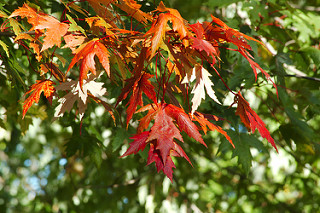Outdoor Insects Are Getting Ready to Move Inside!
By Chris Williams on September 3, 2015.

We’re getting close to that time of year when people start complaining about various insects trying to get into their homes, sometimes in large numbers. We call these pests “fall invaders” or “occasional invaders,” or simply “overwintering pests.” Overwintering is what they have in mind. When the weather cools, days get shorter, and an insects’ outside food sources begin to disappear, it’s time for them to think about where to spend the winter.
Insects Searching for Shelter
Many insects die in the fall as part of their natural cycle, but for others, the adult insect is destined to spend the winter in hiding, and mate and lay eggs in the spring. Outside, insects look for places that are protected from the elements such as under tree bark, in rotting logs, under stones, in thick mulch or leaf cover, or in firewood piles. However, if there’s a house or other building near by, some insects are attracted by the structure and its heat and will look for ways to get inside (See Get Ready for Fall-Invading Pests).
The fall invaders that tend to invade homes in large numbers are usually plant feeders that feed on crops or trees outside and have built up large populations by late summer. It follows, then, that homes that are close to fields tend to have larger invasions of certain insects. Examples of plant-feeding fall invaders are the brown marmorated stink bug, the western conifer seed bug, the elm leaf beetle, the boxelder bug, and the clover mite.
Other common fall invaders are cluster flies (they tend to enter and occupy attics), Asian lady beetles (they feed on many of the plant pests), and paper wasp queens (they will start new nests in the spring). The good news is that, once inside, the insects usually hide in the attic or in wall voids and may not be seen until warm days in early spring when they decide it’s time to go back outside.
It’s Time to Schedule a Fall Exterior Pesticide Treatment
The two best ways to keep these pests out of your home this fall are (1) to have an exterior pesticide treatment around your home’s foundation. This must be done soon before pests start to move in. And, (2) pest-proof your home by caulking cracks and gaps, screening vents, repairing soffits, adding door thresholds, and taking other measures to close openings where insects can enter (see Keep Fall Pest Invaders Out!)
Fortunately, Colonial Pest can take care of both of these jobs for you. Our Preventative Maintenance Program includes a fall treatment designed just to prevent overwintering pests from getting inside. We also have a team of trained technicians who specialize in pest exclusion and can inspect your home for pest entrance points. Give Colonial a call today before you hear the pitter-patter of little feet!
Photo credit: Unsharp Mask / Foter / CC BY